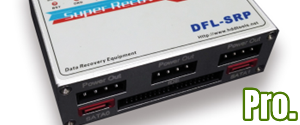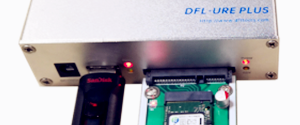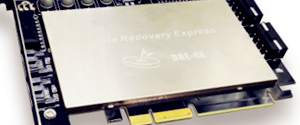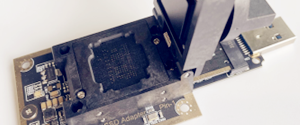What data recovery tools to buy if you want to start a data recovery business?
Free video data recovery training on how to recover lost data from different hard drives?
Where to buy head and platter replacement tools at good prices?
Data recover case studies step by step guide
I want to attend professional data recovery training courses
Data Execution Prevention, or DEP is simply a feature that can be turned on or off, or be configured.
Start by realizing that as far as your computer is concerned, everything is just numbers. The text you’re seeing? That’s all stored as numbers with each number representing a different letter or character. Programs that you run? Numbers too: the instructions that tell the computer what to do are simply numbers.
From that example we can draw an important distinction: there’s “code”, or the instructions that tell a computer what to do, and there’s “data”, the information that the computer works on. But both code and data are stored as numbers.
Now, what hackers and virus writers have been able to do is exploit unpatched vulnerabilities that allow them to a) put what they want into data, and then b) trick the computer into executing that data as if it were code. That’s one way they gain control of a machine and infect or otherwise compromise the machine.
Data Execution Prevention is exactly what it sounds like: the operating system, using either hardware, software or both, depending on the processor’s capabilities, traps the attempt to execute data as if it were code. It’s a very effective technique at blocking malware even if the vulnerability being exploited hasn’t even been publicly exposed yet.
Data Execution Prevention (DEP) is a set of hardware and software technologies that perform additional checks on memory to help prevent malicious code from running on a system. In Microsoft Windows XP Service Pack 2 (SP2) and Microsoft Windows XP Tablet PC Edition 2005, DEP is enforced by hardware and by software.
The primary benefit of DEP is to help prevent code execution from data pages. Typically, code is not executed from the default heap and the stack. Hardware-enforced DEP detects code that is running from these locations and raises an exception when execution occurs. Software-enforced DEP can help prevent malicious code from taking advantage of exception-handling mechanisms in Windows.
>Hardware-enforced DEP
Hardware-enforced DEP marks all memory locations in a process as non-executable unless the location explicitly contains executable code. A class of attacks exists that tries to insert and run code from non-executable memory locations. DEP helps prevent these attacks by intercepting them and raising an exception.
Hardware-enforced DEP relies on processor hardware to mark memory with an attribute that indicates that code should not be executed from that memory. DEP functions on a per-virtual memory page basis, and DEP typically changes a bit in the page table entry (PTE) to mark the memory page.
Processor architecture determines how DEP is implemented in hardware and how DEP marks the virtual memory page. However, processors that support hardware-enforced DEP can raise an exception when code is executed from a page that is marked with the appropriate attribute set.
Advanced Micro Devices (AMD) and Intel have defined and shipped Windows-compatible architectures that are compatible with DEP.
Beginning with Windows XP SP2, the 32-bit version of Windows uses one of the following:
* The no-execute page-protection (NX) processor feature as defined by AMD.
* The Execute Disable Bit (XD) feature as defined by Intel.
To use these processor features, the processor must be running in Physical Address Extension (PAE) mode. However, Windows will automatically enable PAE mode to support DEP. Users do not have to separately enable PAE by using the /PAE boot switch.
Note Because 64-bit kernels are Address Windowing Extensions (AWE) aware, there is not a separate PAE kernel in 64-bit versions of Windows.
>Software-enforced DEP
An additional set of Data Execution Prevention security checks have been added to Windows XP SP2. These checks, known as software-enforced DEP, are designed to block malicious code that takes advantage of exception-handling mechanisms in Windows. Software-enforced DEP runs on any processor that can run Windows XP SP2. By default, software-enforced DEP helps protect only limited system binaries, regardless of the hardware-enforced DEP capabilities of the processor.
>Benefits of DEP
The primary benefit of DEP is that it helps prevent code execution from data pages, such as the default heap pages, various stack pages, and memory pool pages. Typically, code is not executed from the default heap and the stack. Hardware-enforced DEP detects code that is running from these locations and raises an exception when execution occurs. If the exception is unhandled, the process will be stopped. Execution of code from protected memory in kernel mode causes a Stop error.
DEP can help block a class of security intrusions. Specifically, DEP can help block a malicious program in which a virus or other type of attack has injected a process with additional code and then tries to run the injected code. On a system with DEP, execution of the injected code causes an exception. Software-enforced DEP can help block programs that take advantage of exception-handling mechanisms in Windows.
>System-wide configuration of DEP
DEP configuration for the system is controlled through switches in the Boot.ini file. If you are logged on as an administrator, you can now easily configure DEP settings by using the System dialog box in Control Panel.
Windows supports four system-wide configurations for both hardware-enforced and software-enforced DEP.
OptIn: This setting is the default configuration. On systems with processors that can implement hardware-enforced DEP, DEP is enabled by default for limited system binaries and programs that “opt-in.” With this option, only Windows system binaries are covered by DEP by default.
OptOut: DEP is enabled by default for all processes. You can manually create a list of specific programs that do not have DEP applied by using the System dialog box in Control Panel. Information technology (IT) professionals can use the Application Compatibility Toolkit to “opt-out” one or more programs from DEP protection. System compatibility fixes, or shims, for DEP do take effect.
AlwaysOn: This setting provides full DEP coverage for the whole system. All processes always run with DEP applied. The exceptions list to exempt specific programs from DEP protection is not available. System compatibility fixes for DEP do not take effect. Programs that have been opted-out by using the Application Compatibility Toolkit run with DEP applied.
AlwaysOff: This setting does not provide any DEP coverage for any part of the system, regardless of hardware DEP support. The processor does not run in PAE mode unless the /PAE option is present in the Boot.ini file.
Hardware-enforced and software-enforced DEP are configured in the same manner. If the system-wide DEP policy is set to OptIn, the same Windows core binaries and programs will be protected by both hardware-enforced and software-enforced DEP. If the system cannot use hardware-enforced DEP, the Windows core binaries and programs will be protected only by software-enforced DEP.
Similarly, if the system-wide DEP policy is set to OptOut, programs that have been exempted from DEP protection will be exempted from both hardware-enforced and software-enforced DEP.
The Boot.ini file settings are as follows:
/noexecute=policy_level
Note policy_level is defined as AlwaysOn, AlwaysOff, OptIn, or OptOut.
Existing /noexecute settings in the Boot.ini file are not changed when Windows XP SP2 is installed. These settings are also not changed if a Windows operating system image is moved across computers with or without hardware-enforced DEP support.
During installation of Windows XP SP2 and Windows Server 2003 SP1 or later versions, the OptIn policy level is enabled by default unless a different policy level is specified in an unattended installation. If the /noexecute=policy_level setting is not present in the Boot.ini file for a version of Windows that supports DEP, the behavior is the same as if the /noexecute=OptIn setting was included.
If you are logged on as an administrator, you can manually configure DEP to switch between the OptIn and OptOut policies by using the Data Execution Prevention tab in System Properties. The following procedure describes how to manually configure DEP on the computer:
1. Click Start, click Run, type sysdm.cpl, and then click OK.
2. On the Advanced tab, under Performance, click Settings.
3. On the Data Execution Prevention tab, use one of the following procedures:
* Click Turn on DEP for essential Windows programs and services only to select the OptIn policy.
* Click Turn on DEP for all programs and services except those I select to select the OptOut policy, and then click Add to add the programs that you do not want to use the DEP feature.
4. Click OK two times.
IT professionals can control system-wide DEP configuration by using a variety of methods. The Boot.ini file can be modified directly with scripting mechanisms or with the Bootcfg.exe tool that is included in Windows XP SP2.
To configure DEP to switch to the AlwaysOn policy by using the Boot.ini file, follow these steps:
1. Click Start, right-click My Computer, and then click Properties.
2. Click the Advanced tab, and then click Settings under the Startup and Recovery field.
3. In the System startup field, click Edit. The Boot.ini file opens in Notepad.
4. In Notepad, click Find on the Edit menu.
5. In the Find what box, type /noexecute, and then click Find Next.
6. In the Find dialog box, click Cancel.
7. Replace policy_level with AlwaysOn.
WARNING Make sure that you enter the text accurately. The Boot.ini file switch should now read:
/noexecute=AlwaysOn
8. In Notepad, click Save on the File menu.
9. Click OK two times.
10. Restart the computer.
For unattended installations of Windows XP SP2 or later versions, you can use the Unattend.txt file to pre-populate a specific DEP configuration. You can use the OSLoadOptionsVar entry in the [Data] section of the Unattend.txt file to specify a system-wide DEP configuration.
Per-program DEP configuration
For the purposes of program compatibility, you can selectively disable DEP for individual 32-bit programs when DEP is set to the OptOut policy level. To do this, use the Data Execution Prevention tab in System Properties to selectively disable DEP for a program. For IT professionals, a new program compatibility fix that is named DisableNX is included with Windows XP SP2. The DisableNX compatibility fix disables Data Execution Prevention for the program that the fix is applied to.
The DisableNX compatibility fix can be applied to a program by using the Application Compatibility Toolkit.
Data recovery Salon welcomes your comments and share with us your ideas, suggestions and experience. Data recovery salon is dedicated in sharing the most useful data recovery information with our users and only if you are good at data recovery or related knowledge, please kindly drop us an email and we will publish your article here. We need to make data recovery Salon to be the most professional and free data recovery E-book online.







Comments are closed
Sorry, but you cannot leave a comment for this post.